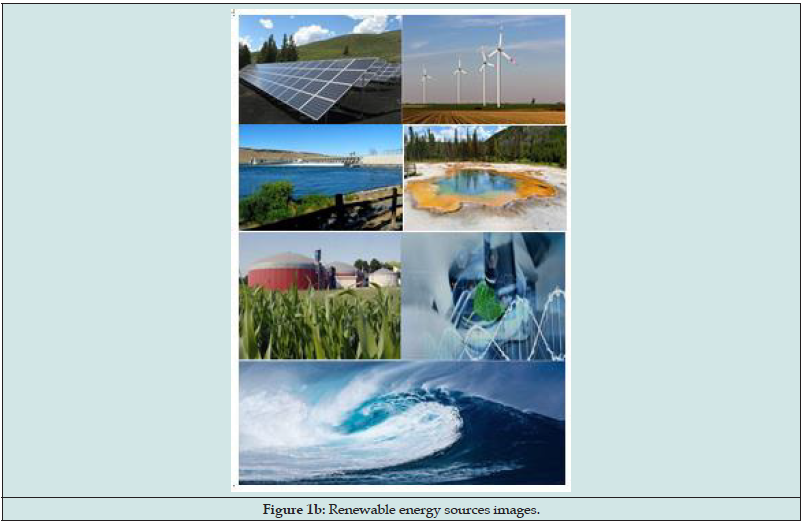
Lupine Publishers Group
Lupine Publishers
Menu
Short CommunicationOpen Access 
Importance of Material Selection in Renewable Energy Generation Volume 2 - Issue 2
Seyfettin Dalgiç*
- Science Faculty, Department of Physics, Trakya University, Turkey
Received: September 28, 2022 Published: October 12, 2022
Corresponding author: Trakya University, Science Faculty, Department of Physics, Edirne, Turkey
DOI: 10.32474/JBRS.2022.02.000131
Short Communication
The energy problem is the biggest problem in the world and this problem continues to grow day by day. Increasing population and developing technology constantly demand more energy. Today, in many countries, mainly coal, oil and natural gas are used for energy. It is possible that these resources will be limited and will run out in the future. These resources, called fossil fuels, are not renewable. Humanity meets the energy it needs by converting various natural resources into energy. Today, the use of renewable energy sources among energy sources is constantly increasing. Renewable energy is generally defined as energy sources that can be supplied mostly above ground and continuously renewed without the need for any production process. It is a type of energy obtained from the energy flow that exists in natural periods. Unlike conventional energy sources, renewable energy sources provide many environmental benefits. In Table 1, renewable energy and conventional energy are compared.
It would be useful to briefly mention renewable energy sources. Renewable energy sources do not run out because they renew themselves. Most of the renewable energies are directly or indirectly sourced from the sun. It is directly used in residences and other buildings to heat and illuminate from solar energy. It is used for various factors such as indirectly generating electricity, heating water and cooling in commercial and industrial buildings.As a result of the sun’s heating of the earth, it creates winds and wind energy is captured with the help of turbines and turned into wind energy. As the sun increases the amount of heat on the earth, it causes evaporation of water from oceans, lakes, streams and water resources. When the water vapor turns into hail, snow or rain and reaches the rivers or streams again, hydro energy can be captured by hydroelectric power plants. Sun heat and light, along with hail, snow and rain, cause plants to grow. The organic substances that make up these plants are called biomass. It is possible to produce electricity by using this organic material and by using it, biomass energy is obtained. Hydrogen is found in all known organic compounds. It is one of the most abundant elements on Earth and is not found as a natural gas. For methane, it is always combined with other elements, as it combines with carbon. When separated from the combined hydrogen energy can be converted into electricity or used as fuel.Brief definitions of renewable energy types can be made as follows. Solar energy, which can be obtained quite economically, is one of the renewable energy sources that does not have a negative impact on the environment. Wind energy offers the opportunity to be used in every corner of the world as a clean and sustainable type of energy that almost does not harm the nature. Hydroelectric power plants are among the efficient systems in energy production. Hot water and steam in the lower layers of the earth’s crust are converted into energy using steam turbines. Geothermal energy with high efficiency can also be used for heating purposes. Biomass power plants can be installed anywhere. Hydrogen energy refers to the energy obtained by converting and processing hydrogen gas. It has an important place among renewable and clean energy sources Wave energy, which is one of the renewable energy sources, is defined as obtaining energy from the wave motion and pressure created by the waves. Renewable energy sources are shown schematically in Figures 1a & 1b.
UK-based price comparison company Compare the Market has published a 2019 study examining 21 countries’ investments in renewable energy sources such as wind, solar, hydropower and bioenergy. According to the research, Germany has invested heavily in renewable energy as part of its efforts to meet the European Union’s renewable energy and climate action targets and has become the first country with the highest use of clean energy. is located. Again, according to this research, Turkey ranks eighth among the countries that use renewable energy the most. The top 10 countries in the ranking are listed in Table 2.
Source: Compare the Market.
Nanoscience and nanotechnology began with two major developments in the early 1980s. The first of these is the increase in computational power. The second is advances in material modeling. Nanomaterials form the basis of nanoscience and nanotechnology. Nanostructured science and technology have become interdisciplinary research in recent years [1]. Especially with the increasing interest in renewable energies, the importance of these materials has increased and will continue to increase day by day. Nanomaterials exhibit strong shape and size effects that cannot be explained by typical theories [2]. It is useful to examine these effects in two different situations. The first is the calculation of the thermal conductivity of some nanomaterials based on the size-dependent atomic structure based on surface effects. The second is to calculate the temperature-dependent changes of the nanomaterial volume ratios. These calculations have been made on nanosolids, nanowires and nanofilms [3]. In addition, the selection of nanomaterials with different structures such as body-centered cubic (BCC), face-centered cubic (FCC), and hexagonal closed package (HCP) differs. The material properties of nanostructures differ from bulk structures due to the high surface area to volume ratio and the emergence of possible quantum effects at the nanoscale. These materials exhibit strong shape and size effects that cannot be explained by typical theories. The study of the effects of size and shape on material properties has received great attention due to their scientific and industrial importance [4]. As a result, the use of nanomaterials in renewable energy production is very important. Turning to renewable energy sources is of great importance for the future of the world and for humanity. According to the International Renewable Energy Agency (IRENA), by 2050, renewable energy sources will meet 86% of global energy needs.
References
- N Taniguchi (1974) On the Basic Concept of Proc Intl Conf Prod Eng Tokyo. Part II, Japan Society of Precision Engineering.
- Gregory Guisbiers, Sergio Mejia-Roseles, Francis Leonard Deepak (2012) Nanomaterial Properties: Size and Shape J Nanomater.
- Madan Singh, Mahıpal Singh (2014) Impact of size and temperature on thermal expansion of Pramana 84(4): 609-619.
- Seyfettin Dalgiç, Göze Gökçe Arikan (2022) Thermal Conductivity and Thermal Expansion Calculations in Some Nanomaterials Used in Renewable Energy Generation. J Biosens & Renew Sci 1(4): 114-120.

Top Editors
-

Mark E Smith
Bio chemistry
University of Texas Medical Branch, USA -

Lawrence A Presley
Department of Criminal Justice
Liberty University, USA -

Thomas W Miller
Department of Psychiatry
University of Kentucky, USA -

Gjumrakch Aliev
Department of Medicine
Gally International Biomedical Research & Consulting LLC, USA -

Christopher Bryant
Department of Urbanisation and Agricultural
Montreal university, USA -

Robert William Frare
Oral & Maxillofacial Pathology
New York University, USA -

Rudolph Modesto Navari
Gastroenterology and Hepatology
University of Alabama, UK -

Andrew Hague
Department of Medicine
Universities of Bradford, UK -

George Gregory Buttigieg
Maltese College of Obstetrics and Gynaecology, Europe -

Chen-Hsiung Yeh
Oncology
Circulogene Theranostics, England -
.png)
Emilio Bucio-Carrillo
Radiation Chemistry
National University of Mexico, USA -
.jpg)
Casey J Grenier
Analytical Chemistry
Wentworth Institute of Technology, USA -
Hany Atalah
Minimally Invasive Surgery
Mercer University school of Medicine, USA -

Abu-Hussein Muhamad
Pediatric Dentistry
University of Athens , Greece

The annual scholar awards from Lupine Publishers honor a selected number Read More...







